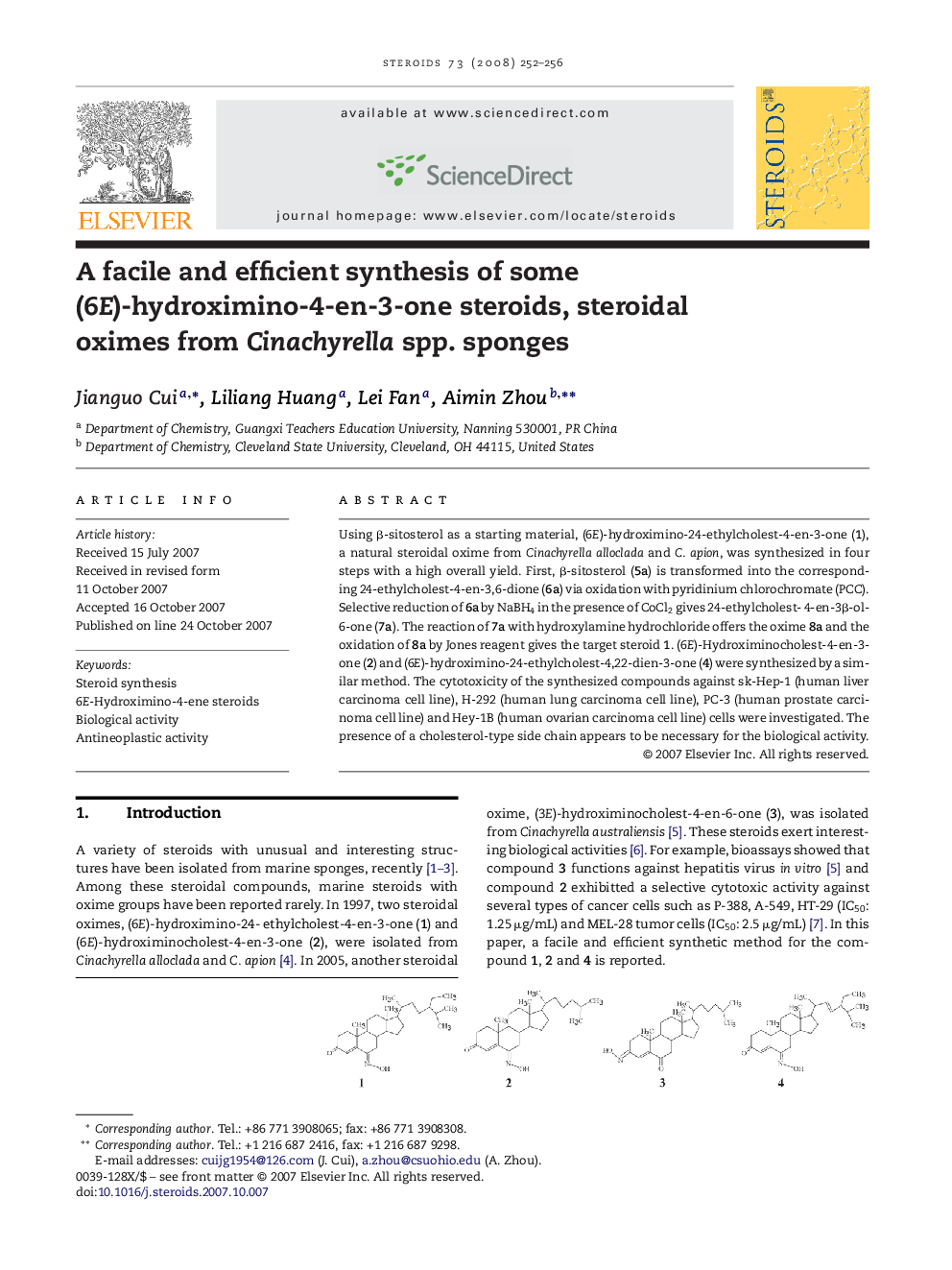| Article ID | Journal | Published Year | Pages | File Type |
|---|---|---|---|---|
| 2028909 | Steroids | 2008 | 5 Pages |
Using β-sitosterol as a starting material, (6E)-hydroximino-24-ethylcholest-4-en-3-one (1), a natural steroidal oxime from Cinachyrella alloclada and C. apion, was synthesized in four steps with a high overall yield. First, β-sitosterol (5a) is transformed into the corresponding 24-ethylcholest-4-en-3,6-dione (6a) via oxidation with pyridinium chlorochromate (PCC). Selective reduction of 6a by NaBH4 in the presence of CoCl2 gives 24-ethylcholest- 4-en-3β-ol-6-one (7a). The reaction of 7a with hydroxylamine hydrochloride offers the oxime 8a and the oxidation of 8a by Jones reagent gives the target steroid 1. (6E)-Hydroximinocholest-4-en-3-one (2) and (6E)-hydroximino-24-ethylcholest-4,22-dien-3-one (4) were synthesized by a similar method. The cytotoxicity of the synthesized compounds against sk-Hep-1 (human liver carcinoma cell line), H-292 (human lung carcinoma cell line), PC-3 (human prostate carcinoma cell line) and Hey-1B (human ovarian carcinoma cell line) cells were investigated. The presence of a cholesterol-type side chain appears to be necessary for the biological activity.
